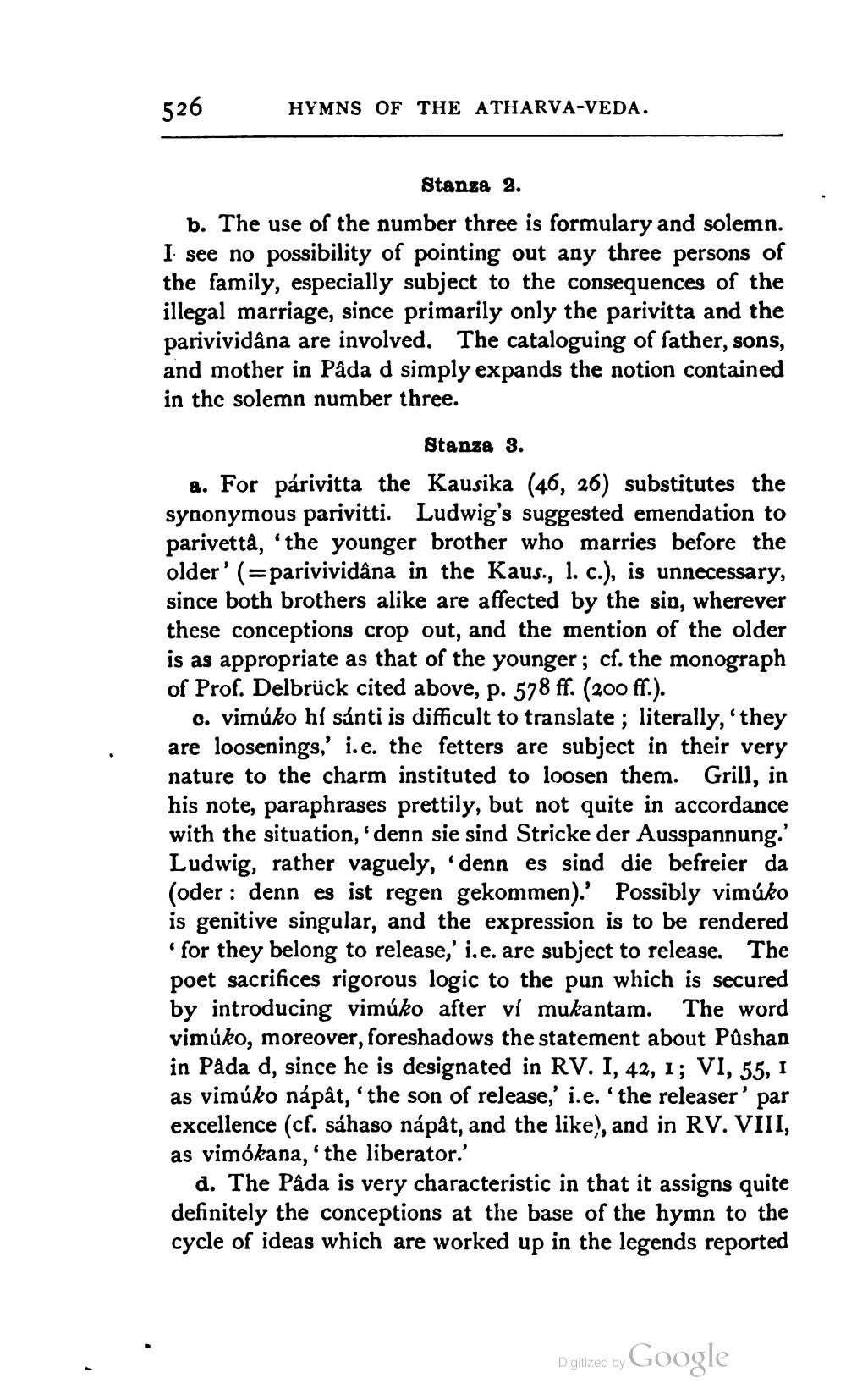________________
526
HYMNS OF THE ATHARVA-VEDA.
Stanza 2.
b. The use of the number three is formulary and solemn. I see no possibility of pointing out any three persons of the family, especially subject to the consequences of the illegal marriage, since primarily only the parivitta and the parivividana are involved. The cataloguing of father, sons, and mother in Pâda d simply expands the notion contained in the solemn number three.
Stanza 3. a. For párivitta the Kausika (46, 26) substitutes the synonymous parivitti. Ludwig's suggested emendation to parivetta, 'the younger brother who marries before the older' (=parivividâna in the Kaus., l. c.), is unnecessary, since both brothers alike are affected by the sin, wherever these conceptions crop out, and the mention of the older is as appropriate as that of the younger ; cf. the monograph of Prof. Delbrück cited above, p. 578 ff. (200 ff.).
0. vimúko hi sánti is difficult to translate ; literally, they are loosenings,' i.e. the fetters are subject in their very nature to the charm instituted to loosen them. Grill, in his note, paraphrases prettily, but not quite in accordance with the situation, denn sie sind Stricke der Ausspannung.' Ludwig, rather vaguely, 'denn es sind die befreier da (oder: denn es ist regen gekommen).' Possibly vimúko is genitive singular, and the expression is to be rendered 'for they belong to release,' i.e. are subject to release. The poet sacrifices rigorous logic to the pun which is secured by introducing vimúko after vi mukantam. The word vimúko, moreover, foreshadows the statement about Pashan in Pada d, since he is designated in RV. I, 42, 1; VI, 55, I as vimúko nápât, the son of release,' i.e. 'the releaser' par excellence (cf. sáhaso nápåt, and the like), and in RV. VIII, as vimókana, 'the liberator.'
d. The Pâda is very characteristic in that it assigns quite definitely the conceptions at the base of the hymn to the cycle of ideas which are worked up in the legends reported
Digized by Google




